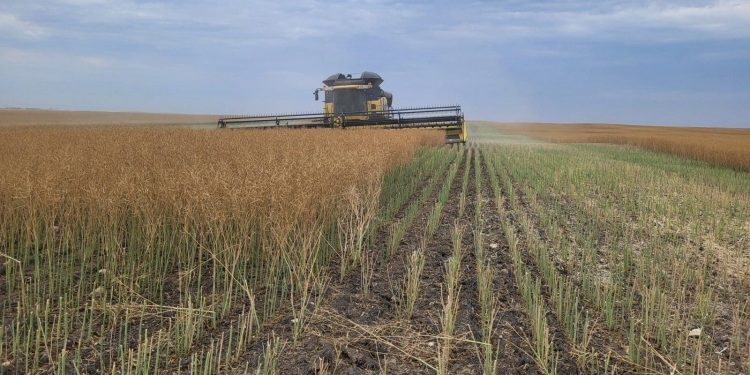How China’s Anti-Dumping Investigation Could Affect Canadian and Australian Canola Prices
This week, China’s Ministry of Commerce announced plans to initiate an anti-dumping probe into the pricing of Canadian canola imports. The timing of this investigation is significant, as it follows Canada’s recent decision to impose a 100-percent anti-dumping tariff on Chinese-made electric vehicles, effective from October 1. The probe could have substantial implications for global canola markets, particularly affecting Canadian and Australian producers.
The timing of the Chinese investigation raises questions about its potential impact on Canadian canola prices. The current harvest season in Canada is just beginning, with Saskatchewan’s harvest 8 percent complete, Manitoba at 1.2 percent, and Alberta at 3 percent as of the last week of August. If China opts to halt canola purchases immediately, it could disrupt the market, although the exact timing of the probe’s conclusion and tariff implementation will determine the overall effect.
Canada is expected to harvest between 18.5 and 19 million tonnes of canola this year. Early reports suggest that yields are approximately 10 percent below initial expectations. According to the USDA, domestic demand for canola is forecasted at 12.7 million tonnes, leaving about 6.3 million tonnes available for export. Historically, China has accounted for about 21 percent of Canadian canola exports, equivalent to approximately 1.7 million tonnes. A complete and immediate cessation of Canadian canola imports by China would likely impact prices, but not as severely as it might for countries more reliant on exports, such as Australia. Canada’s extensive domestic canola-crush sector, primarily geared towards the U.S. biofuel market, has lessened its vulnerability to such trade disruptions.
China has previously targeted Canadian canola during political tensions, notably in 2019 when exports from two major Canadian grain traders were blocked. Despite these challenges, China’s need for canola oil persisted, leading to alternative routes through third-party countries where Canadian canola was processed and re-exported to China.
The timing of the current probe is debated among experts. Although global canola prices have recently dipped due to the Northern Hemisphere’s harvest, there is no broad oversupply. In fact, global ending stocks for the 2024-25 marketing year are anticipated to be the lowest since 2021. European canola production has decreased from 20 million tonnes last year to 17.3 million tonnes this year, coupled with the EU’s reduced use of palm oil in biofuels, which is expected to drive up canola imports.
From a pricing perspective, the initial market reaction saw Canadian ICE canola futures dip by 7.5 percent on September 3, though they later rebounded, closing only 4.3 percent lower. For Australia, the potential imposition of Chinese tariffs on Canadian canola could further buoy prices and export demand in the 2024-25 season. With lower global canola availability and increased European demand, China may need to raise prices to secure alternative supplies if it imposes tariffs on Canadian canola.
Error




